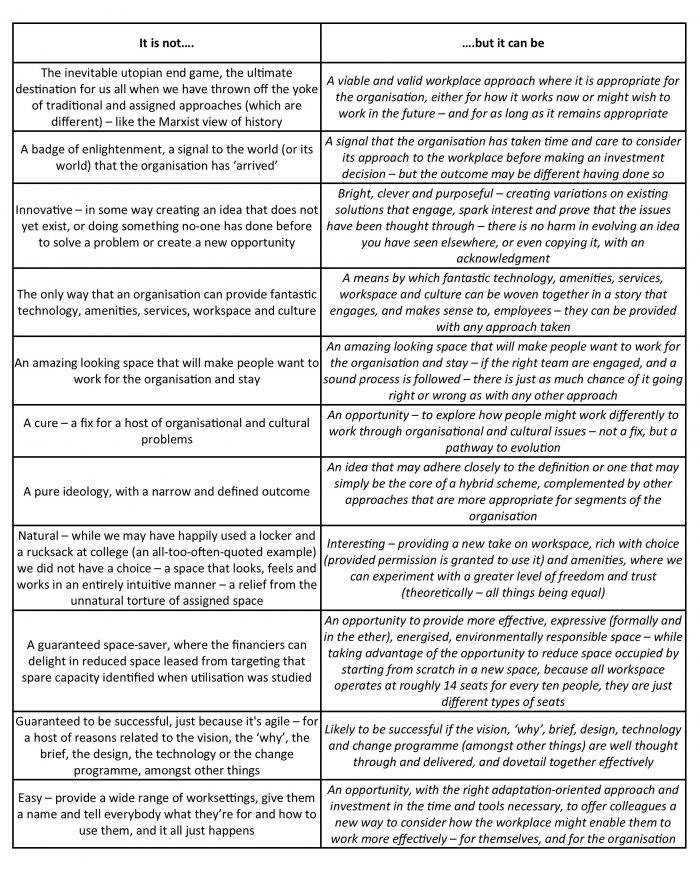Wellbeing at Work Summit Middle East 2026,
Cairo, Riyadh, Muscat and Dubai
20 January 2026
More information
A new role for technologies in workplace change,
Online
21 January 2026
More information
BCO East Anglia Research Report Event: Redefining the Market – Beyond Grade A,
Cambridge
22 January 2026
More information
BCO South West Research Report Event: Redefining The Market – Beyond Grade A,
Bristol
26 January 2026
More information
Space Plus,
London
27 January 2026
More information
Space UK,
London
28 January 2026
More information
High-Tech, Low-Touch: Why The Future of Workplace Experience Isn’t on a Screen,
Online
29 January 2026
More information
Top Cultural risks impacting wellbeing and performance of the Indian Workplace,
Online
18 February 2026
More information
Featured
-

The role of local businesses in promoting mental health and wellbeing
-

A new study suggests that GenAI really is addling your brain
-

Life at the coalface: How the agile workplace first appeared in the mid 20th Century
-

Global survey points to ongoing yearning for flexible work
-

Beyond compliance: how the EU Accessibility Act will redefine workplace inclusion
-

UK employers are missing out on AI productivity gains because of gaps in talent strategy
-

Why writing by hand still matters for learning and thinking







September 18, 2019
A fantastic workplace does not have to be innovative, just fantastic
by Neil Usher • Comment, Flexible working, Workplace design
They ‘still’ work in assigned positions. Here’s a declaration – I’ve created many agile workplaces, and run change programmes for each. I’ve enjoyed doing it and seen positive reactions and benefits.
The research lead claimed that ‘workplace innovation is a litmus test for management quality and leadership’. This is somewhat true, but a fantastic place to work does not have to be innovative, it just has to be fantastic. That could mean using tried and tested ideas, technology that is known to function effectively, and work settings people feel comfortable and familiar with. The approach can still very much be ‘about people’ and not real estate. Some organisations may see innovation in workplace as beneficial, but it is not a litmus test of anything other than a desire to innovate for a purpose that has (hopefully) been envisioned and piloted.
There are at least ten clearly definable approaches to workspace planning in common and occasionally-justifiable use, of which agile is merely one. In certain cases an agile workplace is the right approach, but in others it is not. Given Leesman found that 17 out of the 24 workplaces awarded its Lm+ accreditation in 2017 were open-plan but had assigned desking, there is some suggestion that agile is not ‘the’ panacea.
The table below suggests what the agile workplace is not – yet what it can be. The goal is to create a fantastic place to work that is appropriate to the organisation. If that is ‘traditional’ corridors with individual private offices, if it is appropriate and benefits its people, and they can be at their best every day, that’s commendable.
Everyone deserves a fantastic place to work. Sometimes that’s an agile workplace. Sometimes it’s something else entirely, that works. The only right answer is the one that’s right.
Neil Usher is Chief Workplace and Change Strategist at GoSpace AI, an internationally renowned workplace strategist and former Workplace Director at Sky. His books Unf*cking Work, The Elemental Workplace and Elemental Change and blog are a must read for anybody with an interest in work and workplaces.